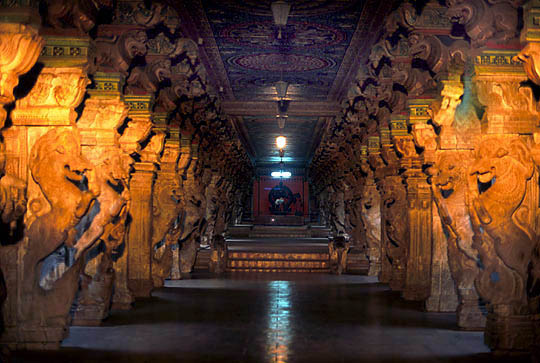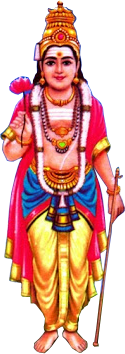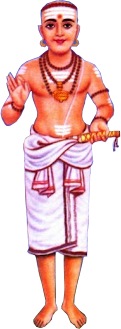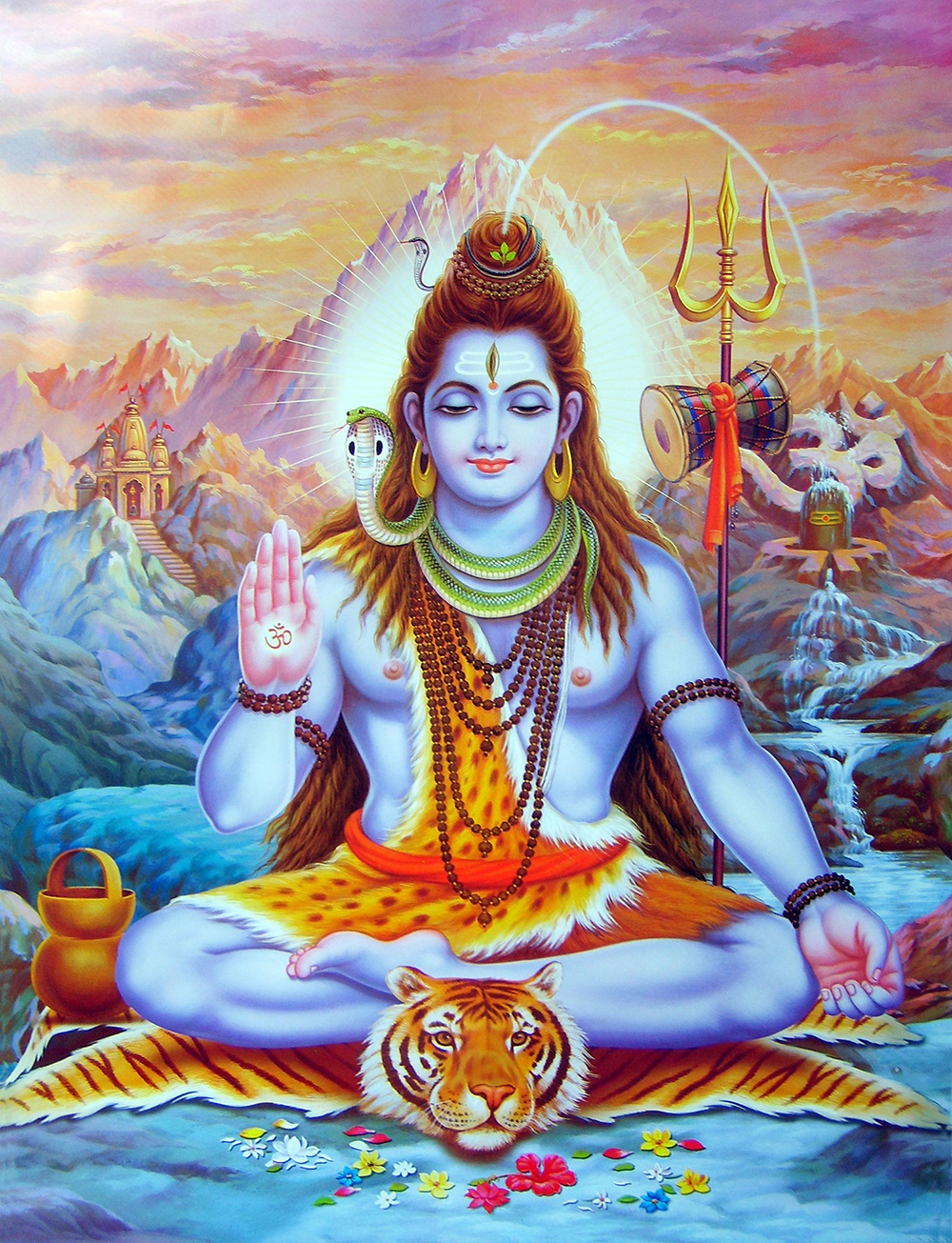
THIRUMURAI - AN INTRODUCTION
Collection of pieces from holy hymns sung by the great Saints - an introduction to devotees.
This article was presented by Shri.R.V.Kumar, Troy, U.S.A.
This article is presented to make children and others to understand the basics of Thirumaris, a treatise sung by Great Saints, who were dedicated their lives to Lord Shiva in Tamil. These collections would make devotees understand the hidden treasure of Nayanmars (the great servitors of God) whose contributions in spreading the glory remains immeasurable. We hope non-Tamil speaking p eople too would be happy to understand the deep devotion exhibited by 63 Nayanmars and other related Saints during the dark ages and bringing the focus of light to the ignorant masses.
Raja Raja Chozha (Chola) was one of the greatest Emperors of medieval history in India. He lived about 1000 years ago. During his reign he ruled Ceylon, Burma, Sumatra, Java, part of Indonesia and Phillipines. He was a great Shiva Bhakta.
The Birth of the Thirumurais
During one of his visits to the famous Thiruvaaroor temple in Thanjavur District, he heard a few people singing some hymns on Lord Lord Shiva. The Raja was greatly fascinated by the quality of the language, the choice of the tune and the devotion it aroused.
The Saivaite Emperor then started making enquiries about the source of the hymns. He soon learnt these were parts of the Divine poetry written by the 4 great Sivacharyas of Tamizh Nadu - Sri (Thiru)Gnana Samandhar, Thirunavukarasar (popularly known as Appar), Sundarar and Manickavachakar.
All of them lived about 400 years before Raja Raja Chola - (i.e.) about 1400 years from today!
While not much was known about the notation of music in the case of others, the Maharaja learnt that the music for Sri Gnana Samandhar verses were composed by a Shaivaite musician named Thiru Neelakanta Yazhpaanar who was with Sri Samandhar most of the time. Neelakanta Yazhpaanar was a great Vainika (Veena Player) and a much-respected Shivacharya. Raja Raja Chola then took on the task of compiling these hymns and popularizing them amongst the masses.
Raja Raja tracked down the family tree of Thiru Neelakanta Yazhpaanar with great difficulty (remember more than 400 years had elapsed!) and was able to get in touch with a very old lady who belonged to Yaazhpanar's clan. She had with her some old palm scripts of Thiru Neelakanta Yazhpaanar handed down to her through several generations.
Unfortunately it contained only a very few - spanning about 21 ragas. The mighty king was much disillusioned. He consulted his ministers who advised him to call on Nambi Aandaar Nambi who lived in a place called Thirunaavaloor in Thanjavur District. Nambi Aandaar Nambi was a great scholar and Vinayaka (Ganesh) Bhakta. The king approached Nambi Aandaar Nambi requesting him to help him trace the hymns composed by the Shivacharyas. Nambi Aandaar Nambi had a vision that night. Sri Vinayaka appeared before Nambi and told him that the entire collection of palm leaves containing thousands of hymns composed by the great Shivacharyas - Thirunavukarasar (popularly known as Appar), Gnana Samandhar, Sundarar, Manickavachakar and others - were available within the precincts of the famous Chidambaram Temple.
Raja Raja immediately visited the Chidambaram temple and requested the Brahma Dikshitar (Head of the Dikshitars who were performing the Poojas in the temple) to hand over the palm inscriptions to him. The Dikshitars resisted stating that the collection could be handed over only to the 4 great personally and to no one else.
The Sivacharyas had attained Mukhti nearly 400 years ago! The Raja was wise. He got idols of the Shivacharyas made, performed the poojas as per the Shivagamas Temple editct of dos and donts of Lord Shiva and His Parivaramuthis and brought them to Chidambaram. The Raja insisted that the as the "Avaahanam" was performed on the idols as per the Shivagamas, they were the Sivacharyas personified. The Dikshitars yielded. The keys of the room lying locked for about 4 centuries were given to the Maharaja.
When the Raja opened the doors, the sight brought tears from his eyes.
The palm inscriptions were buried under anthills. The Raja almost gave up as he was convinced that nothing could be retrieved. He closed his eyes and called out to Nataraja (the dancing form of Lord Shiva) of Chidambaram. Then came a celestial consolation - a divine voice was heard stating that the hymns which were relevant for Kali Yuga were intact. The Raja was overjoyed. He organized to collect all the palm leaves and gave the enviable task of compilation to Nambi Aandar Nambi. It was a stupendous task by any standard. Nambi Aandar Nambi carefully worked on each palm leaf and retrieved thousands of them. He sorted and classified the hymns into 11 volumes. Each volume is called a "Thirumurai".
The classification is as follows
| S. No. | Thirumurai Parts | Consisting of | Photos |
| 1. | Thirumurai I, II and III | Hymns of Sri GyAna Sambandhar | 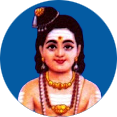 |
| 2. | Thirumurai IV, V and VI | Hymns of Sri Appar alaise Thirunavukkarasar | 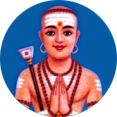 |
| 3. | Thirumurai VII | Hymns of Sundarar | 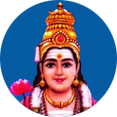 |
| 4. | Thirumurai VIII | Manickavachagar's Thiruvachakam | 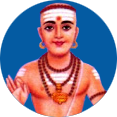 |
| 5. | Thirumurai IX | Hymns of Sri Sendhanar and Thirumaaligai Thevar | |
| 6. | Thirumurai X | Thirumoolar’s Thirumanthiram | |
| 7. | Thirumurai XI | Miscellaneous collections of S/Sri Appodhi Adigal, Karaikkaal Ammayar, Kadavar Kon, Kazharsingar, Narasinga Munai Arayar, Thiru Alayaar, Maharaja Kandar Aditha Chozhar. Poondhirunthu Nambi, Nambi Aandar Nambi and others. |
|
| 7. | Thirumurai XII | Sekizhar |
The first seven Thirumurais are known as Thevarams. This literally means, "garland of honey" symbolizing the sweetness of the language. It also means "hymns on the supreme power".
About 200 years later, (12th Century AD), the Chozha (Chola) Kingdom was ruled by the Anabaya Kulothunga Chola. Anabaya was credited with glory of tiling the roof of the sanctum of Chidmbaram Temple with gold. He is known as "Pon Veynda Chozhan" in Tamil and as "Hiranya Garbha Chakravarthi" in Sanskrit. Both mean "The Emperaor who tiled the roof of the sanctum with gold!". [It should be noted that the work on the Gold tiling started right from the period of Paranthaka Chozha through Raja Raja and Rajendra Chozha. However, the completion of the Golden Roof was during the period of Anabhaya].
During his reign, Sri Sekkizhaar Peruman composed the immortal "Thiru Thondar Puranam" (Popularly known as "Periya Puranam"). "Periya Puranam" literally means "The Great Epic". This depicts the life and times of the 63 Great Shiva Bhaktas or the Servitors whose selfless services to Lord in spreading His Glories among the masses had re-rewritten the history of Hinduism. They are called "Nayanmars". "Periya Puranam" (Great Epic) was added later asTwelfth Thirumurai.
Hindus and the Devotees of Lord Shiva in particular, owe a lot to Raja Raja Chola - the Great Emperor and staunch Shivaite, but for whom we would have lost a great treasure.
Apart from its divinity, the hymns are of great literary value. This collection is also known as the Tamizh Vedam (Tamil Veda). They were composed by the Great Servitors of God for the welfare of the Universe.
Chanting, singing of the verses from the Thirumurais will deliver us from the sins of several Janmas (births). There is nothing that cannot be achieved by singing "Thirumurais".

